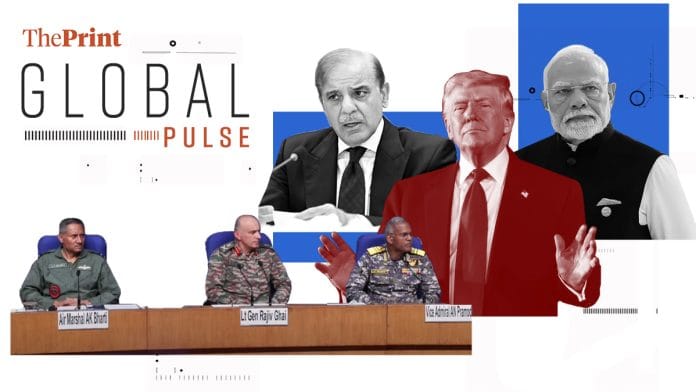New Delhi: Now that the ceasefire appears to be in place, India and Pakistan are fighting to wrest control of the narrative, according to global media.
India, which has long viewed the conflict as a bilateral issue, did not acknowledge the American government’s role, saying that they negotiated directly with Pakistan officials and diplomats, report Anupreeta Das, Salman Masood and Hari Kumar for The New York Times.
“India made no reference to an American role, presumably in part because it hoped to avoid any domestic perception that it had stopped its fight against its neighbour and archenemy under outside pressure,” it reads.
The end of this latest chapter in the India-Pakistan conflict will also come with its own consequences, Mujib Mashal of NYT also reports.
“Western diplomats, former officials and analysts who have studied the dynamics between India and Pakistan said that India came out of this latest conflict looking assertive and aggressive, and perhaps has established some new level of deterrence with Pakistan. But the way the fight played out did not suggest improvement at the operational or strategic level,” he writes.
Bloomberg looks at a “seething” India and an “elated” Pakistan, following US President Donald Trump’s announcement Saturday.
“It was Trump’s move to upstage Prime Minister Narendra Modi, undermine India’s longstanding policy to resolve the Kashmir territorial dispute through bilateral talks and—perhaps worst of all—put the sworn enemies on an equal footing, a move officials in New Delhi have resisted as the nation’s economy surges ahead of Pakistan,” write Sudhi Ranjan Sen, Faseeh Mangi, Dan Strumpf, and Akayla Gardner.
Meanwhile, for Pakistan, the “hyphenation” of the two countries comes as a “significant diplomatic win”.
According to a Wall Street Journal report, US officials received “alarming intelligence” Friday, implying that the India-Pakistan skirmish could “spiral out of control.”
“On a Friday call with Indian Prime Minister Narendra Modi, Vance encouraged the leader to consider de-escalation options and outlined some ideas that Pakistan might agree to, according to a person familiar with the situation. Modi didn’t explicitly say he was open to Vance’s peace outline before they hung up,” it says.
Meanwhile, in an interview with Isaac Chortiner of The New Yorker last week amid the conflict, strategic expert Sushant Singh said, “Most modern weaponry is coming from China. What changed? Essentially the US lost interest in Pakistan in a certain sense, not because the US was selfish in some way, although of course it was selfish, but because Pakistani behaviour in Afghanistan really put off a large number of American officials.” This was in response to Chortiner’s question on changing dynamics, now that Pakistan appears to be firmly in China’s camp.
The Washington Post, via the Associated Press, reports Sunday’s media briefing by Lieutenant General Rajiv Ghai.
Presenting claims from both India and Pakistan regarding the ceasefire violations—India’s “significant and game changing strikes” as well as the drones over Jammu and Kashmir—AP adds it “could not independently verify all the actions attributed to India or Pakistan”.
(Edited by Mannat Chugh)
Also Read: World watches India-Pakistan ceasefire & China’s role as Islamabad’s ‘primary weapon supplier’






